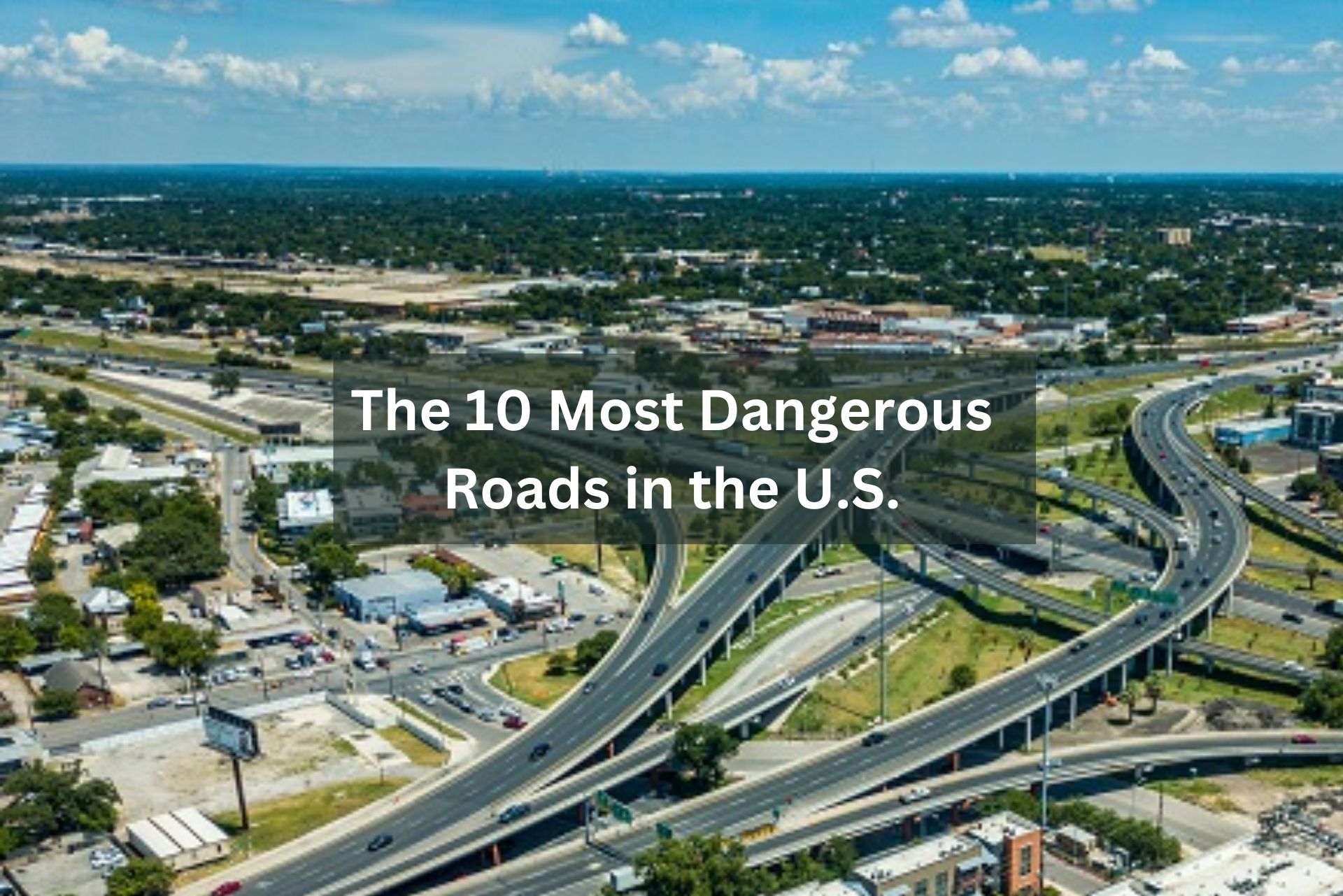Traveling the roads of the United States can be a risky endeavor, and the numbers don’t lie. In 2020, the fatality rate reached its highest point “since 2007, with 1.37 fatalities per 100 million vehicle miles traveled.” In this article, we examine the data to identify the top 10 most dangerous roads in the U.S., exploring the key findings and providing insights to keep you safe on your journeys.
Understanding the Risk: Key Findings
As per our analysis of the latest Fatality Analysis Reporting System data, here are some crucial findings:
- Interstate 95 (I-95) claims the title of the most dangerous highway in the U.S.
- Vehicle fatalities saw a 7.2% increase from 2019 to 2020.
- Wyoming, New Mexico, and South Carolina experienced the highest vehicular crash rates per 100,000 people.
- Hillsborough County in Florida, notably Tampa, recorded the highest number of fatalities nationally, with 15 per 100,000 people.
10 Deadliest Highways in the U.S.: A Closer Look
| SR# | Highway | 2019 Fatalities | Fatalities per 100 miles |
| 1 | I-95 | 284 | 14.88 |
| 2 | I-20 | 208 | 13.52 |
| 3 | I-5 | 186 | 13.47 |
| 4 | I-75 | 237 | 13.27 |
| 5 | I-35 | 197 | 12.56 |
| 6 | I-15 | 158 | 11.02 |
| 7 | I-40 | 253 | 9.89 |
| 8 | I-70 | 158 | 7.35 |
| 9 | I-80 | 209 | 7.21 |
| 10 | US-41 | 141 | 7.02 |
Detailed Explanation of America’s Most Dangerous Road
1. I-95: The Northeast Peril
- 2019 Fatalities: 284
- Fatalities per 100 miles: 14.88
Interstate 95, running along the East Coast, secured its position as the most dangerous highway in the U.S. According to NHTSA’s data, I-95 witnessed the “highest number of overall fatalities in 2019,” with 284 reported incidents. Notably, the fatalities per 100 miles reached a staggering 14.88. Numerous incidents took place during the winter season, particularly in the northeastern region, amidst difficult road conditions. The “east coast of Florida,” particularly in “Jacksonville and Brevard County outside Orlando,” was also a hotspot for accidents on I-95.
2. I-20: The Southern Hazard
- 2019 Fatalities: 208
- Fatalities per 100 miles: 13.52
Despite being “one of the shorter highways on the list,” the I-20 proved to be a significant danger zone. Stretching from West Texas to South Carolina, I-20 passes through high-traffic areas such as Dallas, Texas; Jackson, Mississippi; and Atlanta, Georgia. These regions contributed to the highway’s total of 208 fatalities in 2019, with a fatalities per 100 miles rate of 13.52.
3. I-5: The Pacific Coast Risk
- 2019 Fatalities: 186
- Fatalities per 100 miles: 13.47
In 2019, Interstate 5 (I-5) earned its place as the third most dangerous road in the U.S. Spanning 1,381 miles parallel to the Pacific Coast, I-5 runs through major “California counties, including Sacramento, Los Angeles, and the particularly perilous San Diego County.” The presence of a substantial number of “18-wheelers” on this highway adds to the risk for smaller vehicle drivers. The reported fatalities per 100 miles stood at 13.47.
4. I-75: From the Great Lakes to Florida‘s Tip
- 2019 Fatalities: 237
- Fatalities per 100 miles: 13.27
Running from the Great Lakes to the southern tip of Florida, I-75 poses risks, especially in the icy conditions of Midwestern sections like Michigan. The winter months, with icy and snowy roads, make it advisable for drivers to have a winter emergency kit. Additionally, the Gulf Coast areas in Florida, including Fort Myers, Sarasota, and Tampa, contribute to the danger on I-75.
5. I-35: The Texas Triangle Challenge
- 2019 Fatalities: 197
- Fatalities per 100 miles: 12.56
Interstate 35 (I-35) stretches from Laredo, Texas, near the “Mexican border, to Duluth, Minnesota, near the Canadian border.” Its perilous nature arises from multiple factors, including its route through heavily populated cities in Texas, such as San Antonio, Austin, and Dallas. Furthermore, the highway serves as a major route for 18-wheeler trucks, adding an extra layer of danger.
6. I-15: The Cross-Country Challenge
- 2019 Fatalities: 158
- Fatalities per 100 miles: 11.02
I-15 made its place among the most dangerous highways in the U.S., with 158 reported fatalities in 2019 and a fatalities per 100 miles rate of 11.02. This interstate spans from the Canadian border in Montana to the Mexican border in California, crossing several states. The risks associated with I-15 include diverse terrains and potential weather challenges along its extensive route.
7. I-40: The Transcontinental Threat
- 2019 Fatalities: 253
- Fatalities per 100 miles: 9.89
Interstate 40 (I-40) stands out as a transcontinental threat, stretching from the Atlantic to the Pacific. With 253 reported fatalities in 2019 and fatalities per 100 miles rate of 9.89, I-40’s dangers include various landscapes and conditions, making it crucial for drivers to exercise caution, especially during long journeys.
8. I-70: The Midwestern Menace
- 2019 Fatalities: 158
- Fatalities per 100 miles: 7.35
I-70, cutting through the Midwest, had 158 reported fatalities in 2019, with a fatalities per 100 miles rate of 7.35. While it is among the shorter highways on the list, I-70 poses risks in regions such as Missouri and Colorado. Drivers should be cautious, particularly in heavy-traffic areas and diverse weather conditions.
9. I-80: The Northern Challenge
- 2019 Fatalities: 209
- Fatalities per 100 miles: 7.21
Interstate 80 (I-80), spanning from coast to coast in the northern United States, is marked by 209 reported fatalities in 2019 and a fatalities per 100 miles rate of 7.21. Crossing through states like California and Nebraska, I-80 presents challenges, including potential adverse weather conditions and varying terrains.
10. US-41: The Non-Interstate Peril
- 2019 Fatalities: 141
- Fatalities per 100 miles: 7.02
US-41 stands out as the only non-interstate highway in the “top 10 deadliest roads in the U.S.” In 2019, it reported 141 fatalities, with a fatality rate of 7.02 per 100 miles. Covering regions such as Florida and Michigan, US-41 emphasizes that dangers extend beyond interstates, requiring drivers’ attention on all types of roads.
Is Driving Getting More Dangerous?
Despite reduced travel in 2020 due to the COVID-19 pandemic, there was a 7.2% increase in vehicle-related fatalities compared to 2019. The Federal Highway Administration attributes this paradox to increased speeds, decreased seat belt usage, and a rise in alcohol/drug-related incidents.
Tips for Driving on Dangerous Roads: Stay Safe!
To mitigate risks on hazardous highways, consider the following tips:
- Be Extra Alert: Treat dangerous roads like you’re driving in challenging conditions—stay extra vigilant.
- Plan: Anticipate heavy traffic and adverse weather conditions on long trips.
- Rest: Combat drowsy driving by taking breaks or napping if needed.
- Obey Traffic Laws: Follow speed limits and traffic regulations to reduce accident risks.
Remember, responsible driving extends to having the right auto insurance coverage to safeguard yourself, your passengers, and your vehicle in case of accidents.
Conclusion
As you embark on your journeys, armed with the knowledge of the “most dangerous roads in the U.S.,” take the necessary precautions to ensure your safety. Stay informed, drive responsibly, and consider the tips provided to navigate the roads with confidence. Safe travels!



